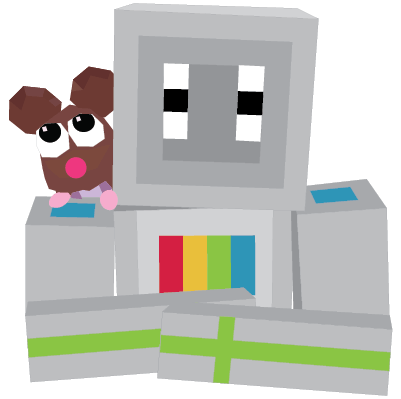CURRICULUM GUIDE / PHASE 1 / STANDARDS ALIGNMENT
PHASE 1 STANDARDS ALIGNMENT
Standard Alignment for
Phase 1 Build a Computer
Beginning with phase 1, all phases will align with standards that apply to all the lessons in the phase. For this phase the CA 2019 K-12 Computer Science Content Standards, 2017 Computer Science Teachers Association (CSTA) K-12 Computer Science Standards (csteachers.org/standards) and K–12 Computer Science Framework (k12cs.org) informed the development and alignment of the lessons that follow. Use them with daily or weekly agendas and planning. Phase 1 is where the learners first build a Piper kit.
We are excited to be aligned with the following standards. Click below to learn more:
K-12 Computer Science Framework Standards
Next Generation Science Standards Connections
UK National Curriculum - Key Stages
Texas Essential Knowledge and Skills for Science
California K12 Computer Science Standards
| Concepts | Standards |
|
Computing Systems: Devices, Troubleshooting |
3-5.CS.1 Describe how computing devices connect to other components to form a system. (P7.2) 3-5.CS.3 Determine potential solutions to solve simple hardware and software problems using common troubleshooting strategies. (P6.2) 6-8.CS.2 Design a project that combines hardware and software components to collect and exchange data. (P5.1)
6-8.CS.3 Systematically apply troubleshooting strategies to identify and resolve hardware and software problems in computing systems. (P6.2) |
|
Algorithms & Programming |
3-5.AP.13 Decompose problems into smaller, manageable tasks which may themselves be decomposed. (P3.2) 3-5.AP.18 Perform different roles when collaborating with peers during the design, implementation, and review stages of program development (ie. following the Piper Blueprint) 6-8.AP.13 Decompose problems and subproblems into parts to facilitate the design, implementation, and review of programs. (P3.2) 6-8.AP.18 Distribute tasks and maintain a project timeline when collaboratively developing computational artifacts. (P2.2, P5.1) |
|
Impacts of Computing |
CA CS 3-5.IC.20 Discuss computing technologies that have changed the world, and express how those technologies influence, and are influenced by, cultural practices. 6-8.IC.21 Discuss issues of bias and accessibility in the design of existing technologies. (P1.2) |
|
Practices |
P1. Fostering an Inclusive Computing Culture P2. Collaborating Around Computing P4. Developing and Using Abstractions P5. Creating Computational Artifacts P6. Testing and Refining Computational Artifacts |
Next Generation Science Standards Connections:
| Concept | Standard |
|
Generate and compare multiple solutions that use patterns to transfer information. |
|
|
Generate and compare multiple possible solutions to a problem based on how well each is likely to meet the criteria and constraints of the problem (Performance Expectation). |
|
|
Plan and carry out fair tests in which variables are controlled and failure points are considered to identify aspects of a model or prototype that can be improved. (P.E.3.4.7) |
|
|
Evaluate competing design solutions using a systematic process to determine how well they meet the criteria and constraints of the problem. |
Common Core State Standards Connections
ELA/Literacy -
CCSS for ELA/Literacy SL.3.1, SL.4.1, SL.5.1:CA CCSS for ELA/Literacy W.3.2, W.4.2, W.5.2
-
RI.4.1 - Refer to details and examples in a text when explaining what the text says explicitly and when drawing inferences from the text. (4-PS4-3)
-
RI.4.9 - Integrate information from two texts on the same topic in order to write or speak about the subject knowledgeably. (4-PS4-3)
-
Cite specific textual evidence to support analysis of science and technical texts.
-
Determine the central ideas or conclusions of a text; provide an accurate summary of the text distinct from prior knowledge or opinions.
Mathematics -
MP1 Make sense of problems and persevere in solving them.
MP5 Use appropriate tools strategically. (3-5-ETS1-1),(3-5-ETS1-2),(3-5-ETS1-3)
California English Language Development (ELD) Standards
The Piper ELD curriculum intends to teach students how to explore computer science topics while interacting in meaningful ways. Using the California ELD standards, this curriculum provides lessons that offer students the chance to continuously speak and listen to each other. The curriculum is broken down into 5 phases. Each phase includes collaborative, interpretive, and productive skills that build upon each other phase to phase.
UK National Curriculum - Key Stages
The Piper Computer Kit program supports the following:
-
Key Stage 2
-
Key Stage 3
-
Key Stage 3 - Design and Technology
-
Key Stage 4 - Year 4 Science
Full detail on UK National Curriculum Key Stages alignment for the Piper Computer Kit Program may be found via the link below.
Texas Essential Knowledge and Skills for Science
The Piper learning experience features hands-on engagement where students learn about computer science. Students discover inputs, outputs, coding and use of sensors to learn about sciences concepts and ideas. Piper has put together the following Texas standards alignments for science and technology to help students learn and help teachers implement the program.
All phases of the Piper experience align with standards. Alignment has been informed by the 2017 Computer Science Teachers Association (CSTA) K-12 Computer Science Standards (csteachers.org/standards), CA 2019 K-12 Computer Science Content Standards, and K–12 Computer Science Framework (k12cs.org). Use them with daily or weekly agendas and lesson planning.

